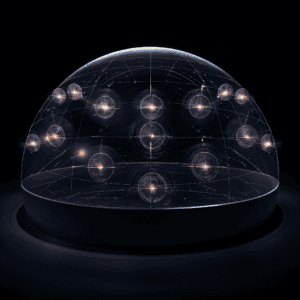


There are three challenges for building a Home Theatre in Japan:
While there are many images of dedicated theatres, basement theatres in the U.S., I have yet to find either of these in Japan. Prone to earthquakes, basements are non-existent, and dedicated rooms for anything (not just HT) are rare to find due to real estate constraints. I have also yet to find multiple huge subwoofers in Japan, but this is a separate topic.
Limited Information
The Home Theatre market in Japan is still maturing, thus there are very few "Gurus" and the installers seem reluctant to produce Youtube videos. The language barrier presents a challenge for non-English speakers.
Limited Brands
Brands available in Japan: Denon/Marantz, Sony, Yamaha, Onkyo/Pioneer... Trinnov, Storm Audio, B&W
Brands NOT available in Japan: Emotiva, Anthem, NAD, SVS
* sidenote: these can be purchased direct with additional logistic costs, no warranty (unless you are willing to pay a hefty amount for return shipping)
As one can observe from the above, Japanese consumers trying to install a home theatre will quickly learn that there are only two options: 1) a domestic brand at a reasonable price, or 2) high-end foreign brands. Curiosity forced me to search what is available in the rest of the world...and discover, I did! There is near-zero exposure of these "value" brands in Japan. Relying only on opinions in the internet (no demo), I took the crap shoot to purchase equipment from Emotiva, NAD, and SVS, and to no surprise, the quality was considerably above my expectations.
It is no secret that the Japanese audio industry is dying, unable to attract the younger generation, slow at adapting to new technologies. This translates to less sales volume, forcing retailers to focus on high-end equipment. They are not interested in exposing mid-range products because they cannot compensate for the lower margins. The large general electronics shops continue to focus on domestic brands that offer better dealer margins. The result of this combination is the two options, which is completely industry-driven.
My aspiration is to change the industry landscape where the market drives what is made available, not the retailers. Quality products deserve the exposure, and consumers deserve the opportunity to listen/experience what is available in the real world.

Leaving aside the details, my core strategy for HT is: 1) prepare the correct screen size according to our living room, and 2) create a surround sound "bubble" accordingly.
The approach for this is to: 1) establish a Main Listening Point (aka MLP), 2) locate the speakers to the ideal location, which is easier said than done. The distances can be compensated by the AV processors / receivers, but the angles and height are key, especially for the mid / high frequencies.
The aim of the sound "bubble" is different from movies vs music. Especially with object-based audio formats, there is three dimensional movement; ex: cars moving from the left rear to the front right. In a violin concerto you don't hear the soloist moving from the left to the right, and therefore, two speakers is ideal. Having said that, recently there is an increasing amount of "atmos music" utilizing 3D audio formats.

Needless to say, subwoofers play a critical role in setting up a HT. The main obstacles for the Japanese consumer are: 1) none of the top foreign brands are available, 2) very little information locally on Low Frequency Management, and 3) proximity of the "neighbors". Subwoofers are known to be the most "room dependent" type of speakers, and therefore, even the most expensive model can sound "dead" without corrrect management.The importance of placement is always overlooked with lots of folklore on the internet.
There are open-sourced software available for Low Frequency management such as REW and MSO (Multi-Sub Optimizer) which can be leveraged by enthusiasts with only minimal acoustic knowledge. The problems with these tools is that: 1) all instructions, tutorials, interface is in English, and 2) requires at least two subwoofers, which, in itself, is a foreign concept. We will later take a look at this in the blog section.
Music listeners abroad also enjoy their subwoofers for music. Local users appear to have an image of poor sound quality (no mystery here as they've never heard a decent subwoofer in recent years). The advantages of using an active subwoofer for music are: 1) taking the load for Low Frequency off of your amp/receiver, thus allowing it to dedicate its power to the mid-high range, and 2) location of woofers on 2-way, 3-way speakers are obviously limited to where your speakers are placed, and since the tweeters dictate this, you are stuck with a Front L/R stereo setup.
The following are some top selling brands in the U.S. : SVS、REL、JTR、PSA、Rythmik、Hsu、Monolith. Again, it is a mystery why none of these are available in Japan while they have distributors in most of the neighboring countries.
